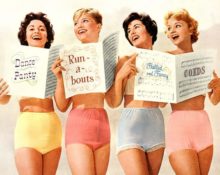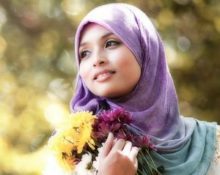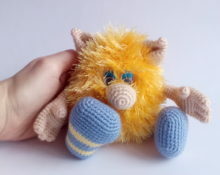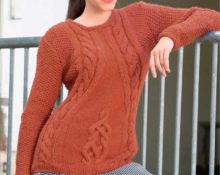And although many believe that a knitted scarf is a thing of the past, it is gradually gaining momentum in popularity. And this is not surprising, since now there are many different knitting methods that allow you to create an incredibly beautiful pattern. You just need to choose the right tools, yarn and choose the most optimal knitting pattern for yourself.
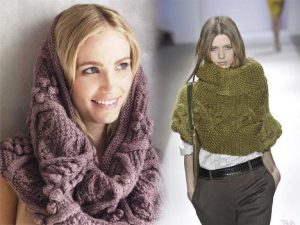
Tools and materials: which ones to choose
The main purpose of a scarf is to keep you warm during the cold season. Therefore, the yarn should be voluminous and warm. But here it is important not to overdo it, so as not to cause skin irritation. Choose a material that is non-prickly and hypoallergenic.
It is desirable that the amount of wool in the yarn is no more than 40-50%. Additional components are acrylic and bamboo. The length of the skein will be 350 m per 100 g.
You can use any type of thread to create a scarf. It is important that you feel warm and comfortable. When choosing material for knitting, you should take into account seasonality.The yarn must also have the following properties:
- wear resistance;
- hypoallergenic;
- softness;
- heat-saving properties (for winter models).
The best option is a combined material that includes natural and artificial fibers.
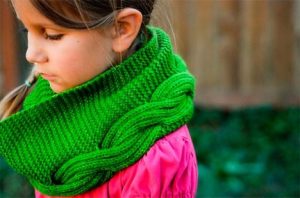
It is also worth paying due attention to the choice of knitting needles. Here you need to be guided by the volume of threads. The thickness of the working tool should be 2 times greater than the thickness of the yarn. For example, for a 350 m thread, the knitting needle size will be 2.5-4.
The knitting density also affects the size of the working tool. If it is too tight, then use large knitting needles, and for loose knitting needles, small ones are suitable.
Scheme of a simple classic scarf
This method is one of the simplest, so it is perfect even for novice needlewomen. The basis is garter stitch and English elastic. These two patterns will allow you to make a double-sided fabric, the peculiarity of which is that the back and face will not be different.
Garter stitch involves knitting in turning rows with knit stitches in the round. Even rows are the wrong side, odd rows are the face. Rotary rows will help prevent the canvas from stretching during operation. To do this, the first loop is always removed without knitting, and the next one is done purl-wise. A scarf knitted using this pattern turns out to be quite voluminous, but pleasant and soft to the touch. And if you want to make it original, you can use multi-colored yarn.
Step by step knitting plan
The technique of creating an English rib should only be used if you have mastered the basics of knitting. The fact is that for such an elastic band, knit and purl loops are used.
The procedure is as follows:
- Cast on the required number of stitches on the knitting needles. Only it should be a multiple of 3, add 2 more edge loops.
- Slip off the first stitch and knit the last stitch.
- First row: knit the next stitch after the edge stitch, then yarn over, and remove the next one. Perform similar steps until the row ends.
- Second row: slip the first stitch, knit the next one with a knit yarn over, then re-slip the loop and do not knit it. Alternate until the row ends.
- Perform similar steps (rows 1 and 2) until you get a scarf of the required length. At the end of knitting, close the loops, cut the thread, and secure the remaining tip with a hook.
The resulting scarf-loop looks interesting and voluminous, and is simple and quick to make. It is quite possible to knit it in just a day. The pattern used is considered the basis for most other more complex knitting techniques. By the way, a scarf is suitable not only for adults, but also for children, you just have to reduce the number of rows.


 0
0